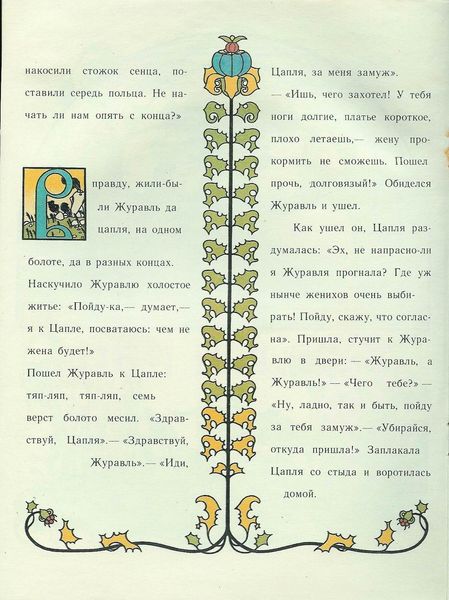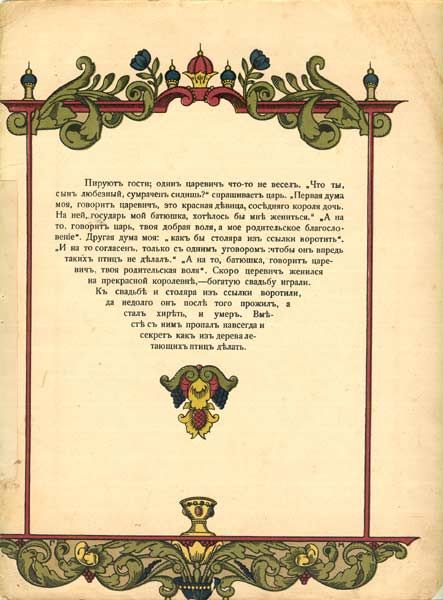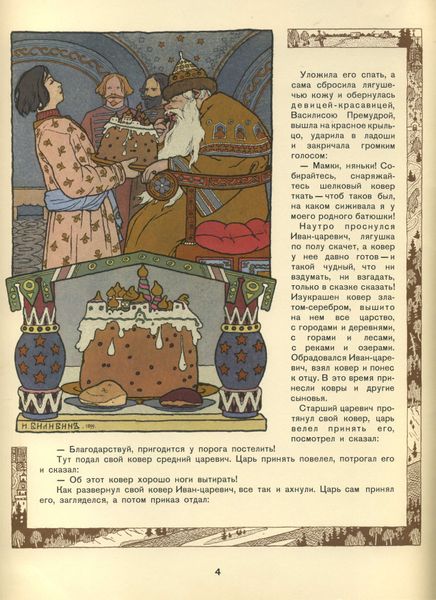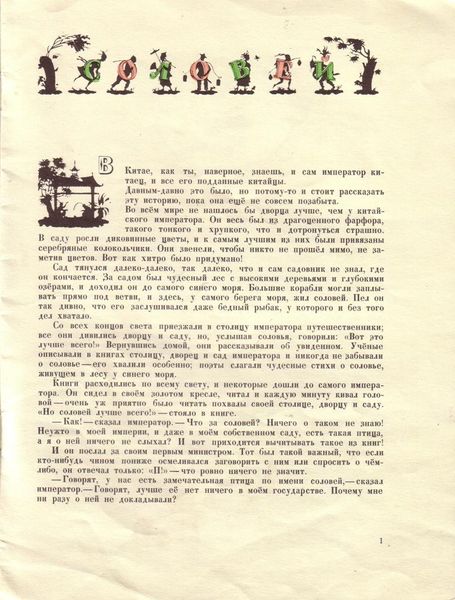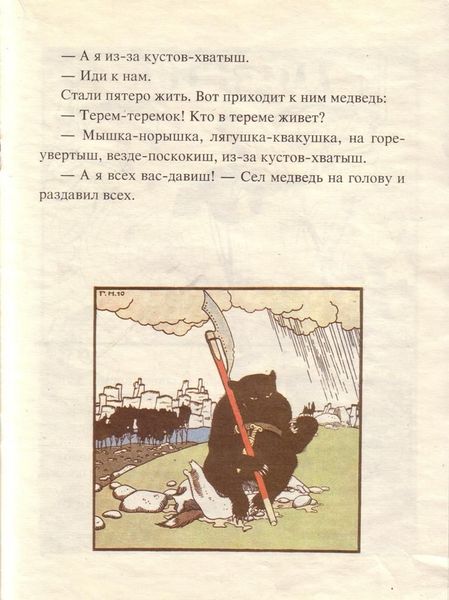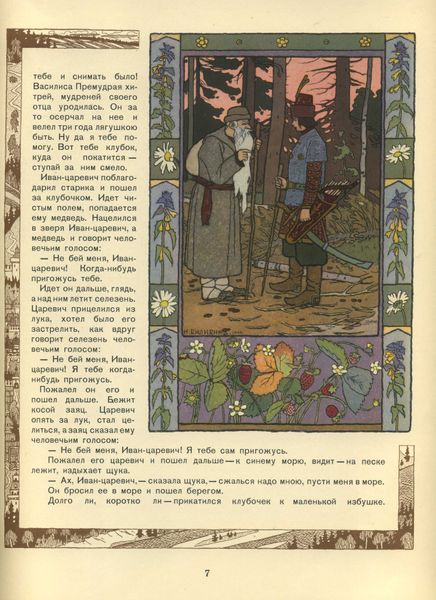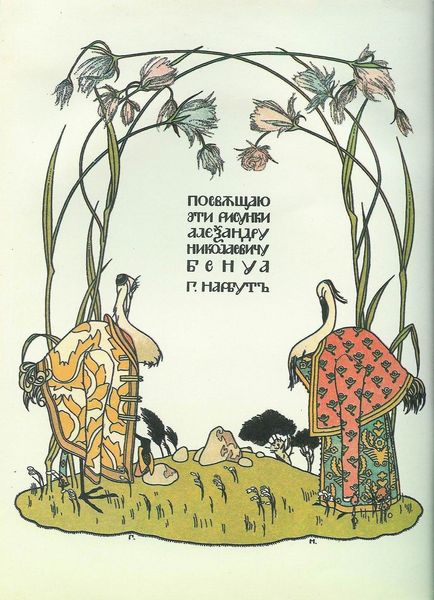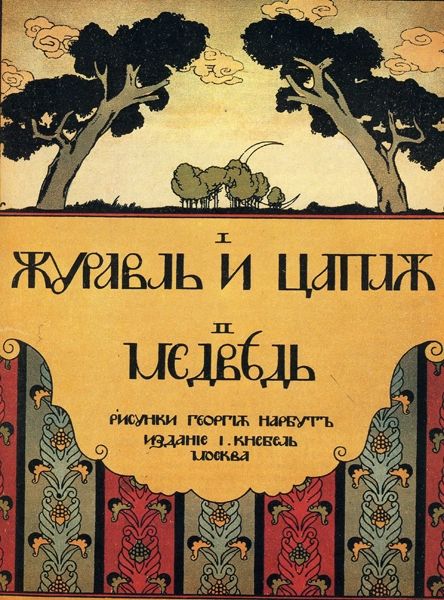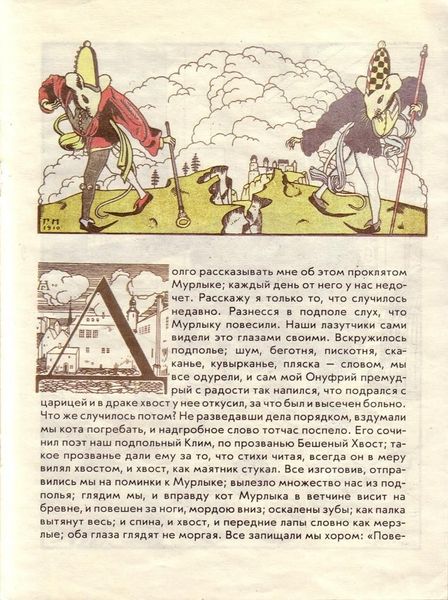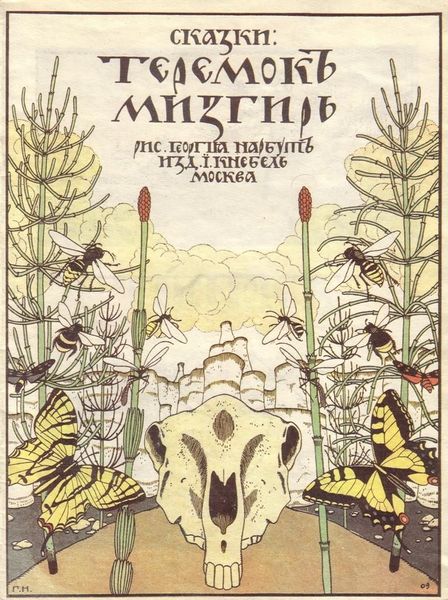
drawing, graphic-art, print, paper, ink
#
drawing
#
graphic-art
#
art-nouveau
#
narrative-art
# print
#
paper
#
ink
#
symbolism
Copyright: Public domain
Curator: We’re looking at a page illustration by Heorhiy Narbut, created in 1907 for the story "The Crane and the Heron. Bear." The piece uses ink on paper, demonstrating Narbut’s graphic art style. Editor: It strikes me as immediately quaint—those borders! The simplified color palette also adds to the antique storybook aesthetic. The rendering feels folksy, with a touch of symbolism. Curator: The context is vital. Narbut worked within the Art Nouveau movement, a period defined by ornamentation and stylized forms. Think about the processes of bookmaking at that time, the labor of typesetting, printing, and binding – Narbut’s illustrations were crafted for mass production and consumption, shaping how the tale was received. Editor: Precisely, and let's also examine the narrative he's illustrating, as this adds depth. What kind of values did these tales convey, considering the prevailing gender roles and social structures of the period? Does this image portray any subtle power dynamics, perhaps through the implied violence or the subjugation of nature through its symbolic use of the bear, for example? How does the artwork promote cultural identity at a tumultuous point in early-twentieth century? Curator: The bear, as the narrative indicates, is central. Considering printmaking, the sharp, deliberate lines of ink show real mastery of the materials. The medium offers a stark, bold aesthetic; no layering. The paper would have likely been produced in the local paper mills. Editor: Yes, examining how stories are visualized can highlight the nuances of cultural norms, especially how women were viewed in traditional folk narratives. And looking closely, the bear becomes emblematic not just of a figure in a narrative but as something potentially representative of larger power dynamics within society. Curator: A fascinating duality in the work! Analyzing Narbut’s artistic process enriches our insight. Editor: Indeed. Recognizing how socio-cultural contexts inform our understanding is imperative!
Comments
No comments
Be the first to comment and join the conversation on the ultimate creative platform.

